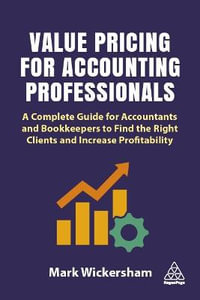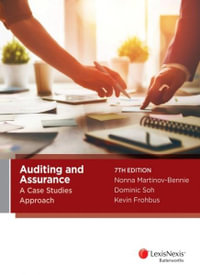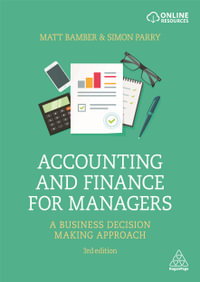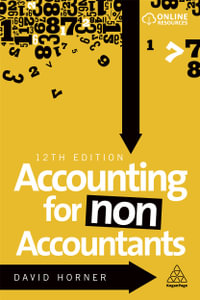
Behind Closed Doors
What Company Audit Is Really about
By: Vivien A. Beattie, Beattie, Vivien Beattie (Editor)
Hardcover | 13 March 2001 | Edition Number 1
At a Glance
332 Pages
21.59 x 13.97 x 2.24
Hardcover
$264.27
or 4 interest-free payments of $66.07 with
orAims to ship in 7 to 10 business days
Industry Reviews
'The case studies give you more idea of how companies really work on the inside than a mile-high pile of management books ever could. They also show for the first time what the realities of audit politics, fee pressures, integrity and independence, and the myth of non-audit services affecting judgement, really are. Many people will have to change their views as a result of the findings.' - Robert Bruce, Accountancy Editor, The Times
'The individual case studies are fascinating reading. The book reminds us that good auditing and good financial reporting is in the hands of human beings in both audit firms and their client companies. The quality of auditing and financial reporting is thus subject to the normal human frailties and understanding this is one of the keys to ensuring high quality. The book makes some practical recommendations for improvement as well as highlighting areas for more research, including the impact of non-audit services on auditor independence - thankfully given a clean bill of health by this study.' - The Baroness Noakes, DBE, Immediate Past President, Institute of Chartered Accountants in England and Wales
'This book is a very convincing description of the heart of the audit process. The case studies bring into play the important influence of third parties, above all, the audit committee whose skill can so clearly make a difference to the company's report. I would recommend the book highly for reading by potential audit partners and by non-executive directors, particularly audit committee members. The case studies show that you don't have to be dealing with Maxwell for your mettle to be tested. This is a research book and, for the lay reader, the real value is obtained by reading the case studies. The detailed analysis that develops a grounded theory analysis of auditor-client interactions will be of more interest to academic researchers. - Ian Hay Davison, FCA and former chairman of the Cadbury-Schweppes Audit Committee
'...the book presents a number of interesting stories about the interplay between auditors and clients as financial statements are about to be finalized. The book is likely to be of interest for both auditing students and academic scholars.' - International Journal of Accounting
Winner of the Deloitte Foundation and American Accounting Association Wildman Medal 2007. For more information, see http: //www.socialfunds.com/news/release.cgi/9306.html
| List of Figures | p. xv |
| List of Tables | p. xvi |
| Preface | p. xvii |
| Acknowledgements | p. xviii |
| List of Abbreviations | p. xix |
| Foreword | p. xx |
| The Background | |
| Introduction and Regulatory Framework | p. 3 |
| What this book is about | p. 3 |
| Fundamental issues faced by the accountancy profession | p. 3 |
| Structural and procedural changes in the accountancy profession | p. 3 |
| Public concerns regarding the quality of financial reporting and audit | p. 5 |
| The regulatory framework in the UK | p. 6 |
| Research approach | p. 7 |
| Outline of book | p. 8 |
| The Auditor--Client Relationship | p. 10 |
| Overview | p. 10 |
| The regulatory dilemma: creative compliance | p. 10 |
| The auditor--client company relationship | p. 11 |
| Paucity of research into the primary relationship | p. 12 |
| The demand for audit | p. 13 |
| Audit quality | p. 14 |
| Audit quality attributes | p. 14 |
| Buyer types | p. 16 |
| The role of commitment | p. 17 |
| Auditor independence | p. 18 |
| The concept and its importance | p. 18 |
| Models of independence | p. 19 |
| Studies of perceived auditor independence | p. 20 |
| Studies of actual auditor independence | p. 23 |
| The influence of the auditor's personal attributes | p. 23 |
| Second partner review | p. 25 |
| Corporate governance and audit committees | p. 26 |
| Corporate governance | p. 26 |
| Corporate governance reporting requirements | p. 27 |
| Audit committees | p. 29 |
| Communication between external auditors and audit committees | p. 30 |
| Audit effectiveness | p. 31 |
| Questionnaire Stage of Study | p. 32 |
| Overview | p. 32 |
| Methods | p. 32 |
| Results | p. 33 |
| Summary | p. 40 |
| The Case Studies | |
| Introduction to the Case Studies | p. 43 |
| Overview | p. 43 |
| Negotiation and conflict in a generic setting--theory | p. 43 |
| Negotiation strategies in non-audit settings--empirical studies | p. 46 |
| Negotiation in audit settings--empirical studies | p. 47 |
| How the case companies were selected and approached | p. 48 |
| Broad approach to the analysis | p. 50 |
| Writing up each case (matched pair of interviews) | p. 50 |
| Preliminary within-case analysis: attaching labels to the key categories | p. 51 |
| Labelling the concepts described in the stories | p. 51 |
| Preliminary analysis of the contexts | p. 51 |
| The interactions | p. 52 |
| The outcomes | p. 52 |
| Within-case analysis | p. 53 |
| Summary of cases | p. 53 |
| Nick and Simon (NS plc) | p. 56 |
| Background to the case | p. 56 |
| The key issues for Nick and Simon | p. 57 |
| Interaction NS1: renegotiation of the financing arrangements and the year-end going concern problems | p. 58 |
| Context NS(a): the changing role of the audit committee | p. 63 |
| Interaction NS2: the need for accounting reform in the group | p. 65 |
| Interaction NS3: negotiations over fees | p. 70 |
| Analysis of general contextual factors | p. 74 |
| The specific interactions and their outcomes | p. 74 |
| Interaction NS1: renegotiation of financing arrangements and year-end going concern problems | p. 74 |
| Interaction NS2: the need for accounting reform in the group-accounting treatment of leases | p. 76 |
| Interaction NS3: negotiations over fees | p. 78 |
| Conclusion | p. 79 |
| Thomas and James (TJ plc) | p. 82 |
| Background to the case | p. 82 |
| The key issues for Thomas and James | p. 83 |
| Interaction TJ1: stock obsolescence provisions | p. 84 |
| Interaction TJ2: the treatment of product development costs under FRS 3 | p. 88 |
| Interaction TJ3: accounting treatment of restructuring costs under FRS 3 | p. 92 |
| Interaction TJ4: events surrounding the sale of the group | p. 100 |
| Analysis of general contextual factors | p. 102 |
| The specific interactions and their outcomes | p. 103 |
| Interaction TJ1: stock obsolescence provisions | p. 103 |
| Interaction TJ2: treatment of product development costs under FRS 3 | p. 107 |
| Interaction TJ3: treatment of restructuring costs under FRS 3 | p. 109 |
| Interaction TJ4: events surrounding the sale of the group | p. 112 |
| Conclusion | p. 113 |
| Michael and Paul (MP plc) | p. 115 |
| Background to the case | p. 115 |
| The key issues for Michael and Paul | p. 116 |
| Context MP(a): the group's relationship with its auditors | p. 116 |
| Context MP(b): the role of the audit committee | p. 119 |
| Interaction MP1: accounting treatment and disclosures relating to an acquisition | p. 121 |
| Interaction MP2: control and accounting problems in the group's treasury function | p. 132 |
| Interview evidence | p. 132 |
| Analysis of general contextual factors | p. 140 |
| The specific interactions and their outcomes | p. 142 |
| Interaction MP1: accounting issues relating to an acquisition | p. 142 |
| Interaction MP2: control and accounting problems in the group's treasury function | p. 145 |
| Conclusion | p. 150 |
| Colin, Richard and Andrew (CRA plc) | p. 151 |
| Background to the case | p. 151 |
| The key issues for Colin, Richard and Andrew | p. 152 |
| Interactions CRA1, CRA2 and CRA3: Accounting for two acquisitions | p. 152 |
| Interaction CRA1: the Neweng acquisition | p. 154 |
| Interaction CRA2: agreeing the fair values in the Cleanup acquisition | p. 155 |
| Interaction CRA3: accounting for depreciation on the Cleanup landfill sites | p. 158 |
| Interaction CRA4: accounting for long-term leases on fixed plant | p. 159 |
| Interaction CRA5: restructuring provisions | p. 163 |
| Context CRA(a): the working relationship between the group and its auditors | p. 166 |
| Context CRA(b): the procedure for clearing the year-end accounts and the role of the audit committee | p. 168 |
| Analysis of general contextual factors | p. 172 |
| The specific interactions and their outcomes | p. 174 |
| Interaction CRA1: the Neweng acquisition | p. 174 |
| Interaction CRA2: agreeing the fair values in the Cleanup acquisition | p. 175 |
| Interaction CRA3: accounting for depreciation on the landfill sites | p. 175 |
| Interaction CRA4: accounting for long-term leases on fixed plant | p. 177 |
| Interaction CRA5: restructuring provisions | p. 179 |
| Conclusion | p. 182 |
| Robert and Charles (RC plc) | p. 184 |
| Background to the case | p. 184 |
| The key issues for Robert and Charles | p. 185 |
| Interaction RC1: accounting for businesses which were to be sold on after the Coreco acquisition | p. 186 |
| Interaction RC2: agreeing the accounting treatment and the level of provisions for stock and defective products | p. 189 |
| Interaction RC3: accounting for post-acquisition reorganisation costs | p. 193 |
| Interaction RC4: disclosure of reorganisation costs | p. 194 |
| Context RC(a): the composition of the audit committee and its involvement in accounting and auditing issues | p. 195 |
| Context RC(b): the working relationships between the parties and the impact on fee negotiation | p. 198 |
| Analysis of general contextual factors | p. 203 |
| The specific interactions and their outcomes | p. 204 |
| Interaction RC1: accounting for resale of businesses acquired | p. 204 |
| Interaction RC2: agreeing the accounting treatment and the level of provisions for stock and defective products to be brought into the group accounts on the Coreco acquisition | p. 206 |
| Interaction RC3: accounting for post-acquisition reorganisation costs | p. 208 |
| Interaction RC4: disclosure of reorganisation costs | p. 208 |
| Conclusion | p. 210 |
| Dennis and Alan (DA plc) | p. 212 |
| Background to the case | p. 212 |
| The key issues for Dennis and Alan | p. 213 |
| Context DA(a): the background to the bid | p. 213 |
| Interactions DA1 and DA2: accounting for assets on disposal and acquisition of businesses | p. 216 |
| Interaction DA1: accounting for assets on disposal of businesses | p. 216 |
| Interaction DA2: accounting for assets on acquisition of businesses | p. 219 |
| Interaction DA3: disclosure of acquisitions, disposals and bid costs under FRS 3 | p. 221 |
| Interaction DA4: last-minute adjustments to the accounts | p. 224 |
| Interaction DA5: the chairman's attitude to goodwill | p. 227 |
| Interaction DA6: compliance with the Cadbury Code and other non-mandatory disclosures | p. 230 |
| Context DA(b): the role of the audit committee | p. 233 |
| Context DA(c): the nature of the company's relationship with its auditors | p. 234 |
| Context DA(d): non-audit services and fees | p. 237 |
| Analysis of general contextual factors | p. 239 |
| Specific interactions | p. 240 |
| Interaction DA1: accounting for assets on disposal of businesses | p. 240 |
| Interaction DA2: accounting for assets on acquisition of businesses | p. 242 |
| Interaction DA3: disclosure of acquisitions, disposals and bid costs under FRS 3 | p. 244 |
| Interaction DA4: last-minute adjustments to the accounts | p. 244 |
| Interaction DA5: the chairman's attitude to goodwill | p. 245 |
| Interaction DA6: compliance with the Cadbury code and other non-mandatory disclosures | p. 247 |
| Conclusion | p. 247 |
| The Analysis and Conclusions | |
| The Grounded Theory Process | p. 253 |
| Overview | p. 253 |
| The analytical process | p. 253 |
| The nature of grounded theory | p. 253 |
| Procedures and techniques | p. 254 |
| Cross-Case Analysis and Theory Development | p. 256 |
| Introduction | p. 256 |
| Introducing the principal categories | p. 256 |
| A detailed examination of each principal category | p. 258 |
| Quality of primary relationship | p. 258 |
| Company circumstances | p. 259 |
| Firm circumstances | p. 260 |
| Interaction issue | p. 261 |
| Objectives of primary parties | p. 262 |
| Key third parties | p. 263 |
| Other specific contextual factors | p. 263 |
| Interaction events | p. 263 |
| Interaction strategies | p. 264 |
| Interaction outcome | p. 265 |
| Interaction consequences | p. 266 |
| Grounded theory of interaction outcomes | p. 267 |
| Good outcome, attained easily | p. 273 |
| Good outcome, attained relatively easily/as easy as could be | p. 273 |
| Good outcome, attained with difficulty | p. 273 |
| Relatively good/acceptable outcome, attained easily/relatively easily | p. 274 |
| As good as could be, slightly difficult | p. 274 |
| Poor outcome, attained easily | p. 274 |
| Poor/creative compliance outcome, attained with a degree of difficulty | p. 274 |
| AEP (seller) types | p. 275 |
| The 'crusader' | p. 276 |
| The 'safe pair of hands' | p. 276 |
| The 'accommodator' | p. 276 |
| The 'truster' | p. 277 |
| Other possible seller types: the 'incompetent' and the 'rogue' | p. 277 |
| Comparison with extant theory | p. 278 |
| Conclusions | p. 279 |
| Overview | p. 279 |
| Summary of findings | p. 279 |
| Factors which influence the company's predisposition towards earnings quality | p. 279 |
| The influence of ownership structure and corporate culture on attitudes to regulatory compliance | p. 280 |
| Factors which influence the outcomes of financial reporting interactions | p. 281 |
| The effectiveness of sanctions available to FDs and AEPs and the impact of materiality on their application | p. 283 |
| Partner types and quality control in audit firms | p. 284 |
| The policy implications of our findings | p. 284 |
| The auditor's influence on the quality of financial reporting | p. 284 |
| The key to auditor independence | p. 285 |
| Creative compliance | p. 285 |
| Substance and form of corporate governance | p. 286 |
| Proposals and issues for regulators and audit firms to consider | p. 286 |
| Regulators | p. 286 |
| Audit firms | p. 288 |
| Implications for future research | p. 290 |
| Further verification of grounded theory | p. 290 |
| Further development of grounded theory | p. 291 |
| Implications for related areas of research | p. 291 |
| In closing... | p. 292 |
| Bibliography | p. 294 |
| Index | p. 302 |
| Table of Contents provided by Syndetics. All Rights Reserved. |
ISBN: 9780333747841
ISBN-10: 0333747844
Published: 13th March 2001
Format: Hardcover
Language: English
Number of Pages: 332
Audience: General Adult
Publisher: Springer Nature B.V.
Country of Publication: GB
Edition Number: 1
Dimensions (cm): 21.59 x 13.97 x 2.24
Weight (kg): 0.53
Shipping
| Standard Shipping | Express Shipping | |
|---|---|---|
| Metro postcodes: | $9.99 | $14.95 |
| Regional postcodes: | $9.99 | $14.95 |
| Rural postcodes: | $9.99 | $14.95 |
How to return your order
At Booktopia, we offer hassle-free returns in accordance with our returns policy. If you wish to return an item, please get in touch with Booktopia Customer Care.
Additional postage charges may be applicable.
Defective items
If there is a problem with any of the items received for your order then the Booktopia Customer Care team is ready to assist you.
For more info please visit our Help Centre.
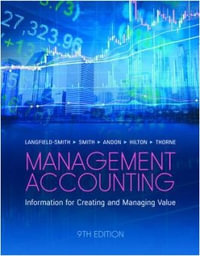
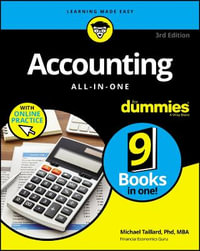





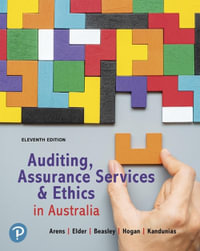


![Principles of Managerial Finance [Global Edition] : 16th edition - Chad J. Zutter](https://www.booktopia.com.au/covers/200/9781292400648/3659/principles-of-managerial-finance-global-edition-.jpg)

